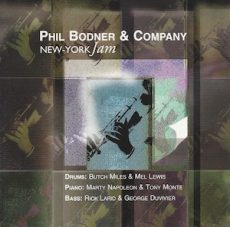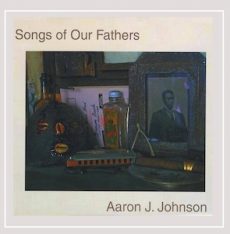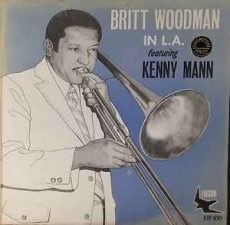
Daily Dose Of Jazz…
Alfred Viola was born on June 16, 1919 in Brooklyn, New York and grew up in an Italian family. He learned to play the guitar and mandolin as a teenager. Enlisting in the Army during World War II and played in an Army jazz band from 1942 to 1945.
He started a trio with pianist Page Cavanaugh and bassist Lloyd Pratt. The band appeared in several films, including Romance on the High Seas with Doris Day, and played a few dates in 1946 and 1947 with Frank Sinatra. Viola continued to work with Sinatra regularly, accompanying him on several hundred studio recordings and concert dates between 1956 and 1980.
Viola was a session musician in Los Angeles, California performing in films and television. His mandolin playing can be heard on the soundtrack of The Godfather. Other credits include West Side Story and Who’s Afraid of Virginia Woolf? He continued playing jazz as well, with Bobby Troup, Ray Anthony, Harry James, Buddy Collette, Stan Kenton, Gerald Wilson and Terry Gibbs.
He worked as a session musician on over 500 albums, including releases by Natalie Cole, Neil Diamond, Marvin Gaye, Julie London, Steve Lawrence, Linda Ronstadt, Jimmy Witherspoon, Helen Humes, June Christy, Ella Fitzgerald, Anita O’Day, Nelson Riddle, and Joe Williams.
Viola and Cavanaugh reunited in the 1980s with Phil Mallory and continued to play regularly in Los Angeles until the late 1990s.
Guitarist Al Viola, recorded ten albums as a leader, died of cancer on February 21, 2007 at the age of 87 in Los Angeles.
More Posts: bandleader,guitar,history,instrumental,music

Daily Dose Of Jazz…
Philip L. Bodner was born in Waterbury, Connecticut on June 13, 1917 and worked as a studio musician in the 1940s and 1950s in New York City. He recorded with Benny Goodman and with Miles Davis and Gil Evans in 1958. The 1960s saw him playing with Oliver Nelson and J.J. Johnson.
During the Sixties he organized The Brass Ring, a group modeled after Herb Alpert and the Tijuana Brass. The group released nine albums between 1966 and 1972 and associations in the 1970s included Oscar Peterson, Yusef Lateef, Peanuts Hucko, Wild Bill Davison, and Ralph Sutton.
Bodner played the signature piccolo part on Van McCoy’s disco hit song The Hustle. During that period he also played with Ralph Sutton and Johnny Varro, worked with Mingus Epitaph, and arranged Louie Bellson’s tribute to Duke Ellington’s Black, Brown and Beige.
He worked in a swing style with Marty Napoleon, Mel Lewis, and George Duvivier in the 1980s and played with Maxine Sullivan and Barbara Carroll. Over the course of his career he recorded five albums as a leader, and eleven as a sideman with Coleman Hawkins, Cootie Williams, Miles Davis, Joe Wilder, Paul Desmond, Wes Montgomery, Cal Tjader, Mel Davis, George Benson, Freddie Hubbard, and Joey DeFrancesco.
Clarinetist and studio musician Phil Bodner, who also played flute, oboe, saxophone, and English horn, died in New York City on February 24, 2008, at age 90.

Daily Dose Of Jazz…
Aaron J. Johnson was born in Washington, D.C. on June 10, 1958. He studied piano and drums before taking up the trombone at age 12. While in high school he frequently performed with area funk bands but also conducted and arranged for student ensembles under the direction of noted trumpeter Peter D. Ford. It was Ford who gave him his first professional gigs and introduced him to Ellington alumni, bandleader and alto saxophonist Rick Henderson.
Although pursuing degrees in electrical engineering, Johnson remained active as a trombonist and bass trombonist throughout his college years. He had the good fortune to play with the University of Pittsburgh Jazz Ensemble under the direction of Kenny Clarke and Nathan Davis. Following college Aaron continued gigging around D.C. and the New York area, studying privately with reed multi-instrumentalist Makanda Ken McIntyre.
By the early 1990s Johnson established himself as an experienced and valuable sideman, composer and arranger. He has since recorded and performed with a multitude of major artists and ensembles to include Reggie Workman, Jimmy Heath, Charles Tolliver, Oliver Lake, Muhal Richard Abrams, Bill Lee, Frank Lacy, The Mingus Big Band, the Count Basie Orchestra, Steve Turre’s Sanctified Shells, the Lincoln Center Jazz Orchestra and the Smithsonian Jazz Masterworks Orchestra.
He has received the New Jersey State Council Fellowship in Music Composition (2000) Aaron Johnson has composed and arranged works performed or recorded by Frank Foster, Steve Turre, Frank Lacy, the Nancie Banks Orchestra, and Paradigm Shift. He has been featured in film scores, television commercials and public radio broadcasts.
Trombonist Aaron Johnson is currently in Columbia University’s Musicology doctorate program and has released his debut album Songs Of Our Fathers and continues to perform.
More Posts: bandleader,history,instrumental,jazz,music,trombone

Daily Dose Of Jazz…
Mel Martin was born on June 7, 1942 in Sacramento, California. Both parents were singers and early piano and clarinet lessons led him to Benny Goodman and Glen Church’s Jazz Rhythm & Blues radio program. The big bands of Benny Goodman, Duke Ellington, Woody Herman, Shelly Manne and His Men, and Cannonball Adderley, passing through town kept his interest high. Forming a small combo of clarinet, accordion and drums, his father got him his first gig, afterwards they played at Mel’s Drive-In for tips.
While still a teenager, Martin was good enough to sit in with Wes Montgomery and his brothers. Already jamming with Black musicians in the community, he’d hit the clubs to hear the Montgomery Brothers when they played, sometimes sitting in on flute.
At San Francisco State in 1962 while majoring in music he met fellow undergraduate John Handy and played with him in his Freedom Band. At the same time, Mel was learning how to play bop with the musicians who hung out at Bop City, Soulville, the Jazz Workshop, Shelton’s Blue Mirror, Jack’s on Sutter and later the Both/And.
In the late 1960s and early Seventies Martin played with progressive rock and Latin bands including The Loading Zone, Cold Blood, Azteca and Boz Scaggs, Doug Sahm’s Honky Blues Band, Wayne Talberty, Chuck Berry, Dr. John and others. Creating Listen in 1977 which became part of the early West Coast jazz fusion scene, he recorded three albums before the end of the decade.
He was the artistic director of Bebop and Beyond, a group he founded in 1983 and released four albums. Martin has received five National Endowment for the Arts grants, and was honored by the San Francisco Jewish Museum. As performer, composer, arranger and multi-instrumentalist he contributed music to television and film. He was a bandleader, contractor and sideman, he played in) big bands for McCoy Tyner and Dizzy Gillespie and played with the Freddie Hubbard Quintet and Charlie Haden’s Liberation Orchestra.
As an educator he taught the Stanford Jazz Workshop at Stanford University from 1984 to 1995, produced a series of Jazz Workshops for the Marin Jewish Community Center and regularly conducts workshops at his studio in Novato and in the Marin public schools.
Saxophonist, composer, arranger, and bandleader Mel Martin, who also played flute, clarinet and piccolo, died of a heart attack on November 17, 2017 at age 75.
More Posts: bandleader,history,instrumental,jazz,music,saxophone

Daily Dose Of Jazz…
Britt Woodman was born on June 4, 1920 in Los Angeles, California. A childhood friend of Charles Mingus, he first worked with Phil Moore and Les Hite. After serving in World War II he played with Boyd Raeburn before joining with Lionel Hampton in 1946.
During the 1950s he worked with Duke Ellington. As a member of Ellington’s band he can be heard on twenty-five recorings such as 1957’s Such Sweet Thunder, Ella Fitzgerald Sings the Duke Ellington Song Book, and 1958’s Black, Brown, and Beige and Ellington Indigos.
1960 saw Britt departing from Ellington to work in a pit orchestra. He went on to later work with Mingus and can be heard on the album Mingus Mingus Mingus Mingus Mingus released in 1963. In the 1970s he led his own octet and recorded with pianist Toshiko Akiyoshi. In 1989, he was part of the personnel for the album Epitaph dedicated to the previously unrecorded music of Charles Mingus.
He recorded Playing For Keeps and In L.A. as a leader, and leaves a sideman recording catalogue of ninety-three albums with Toshiko Akiyoshi – Lew Tabackin Big Band, Bill Berry, Ella Fitzgerald, Lionel Hampton, Johnny Hodges, Jimmy Smith, Gene Ammons, Ray Brown, Ruth Brown, Frank Capp, Nat Pierce, Benny Carter, Rosemary Clooney, John Coltrane, Randy Crawford, Tadd Dameron, Miles Davis, Booker Ervin, John Fahey, Dizzy Gillespie, Benny Golson, Chico Hamilton, Jimmy Hamilton, Hank Jones, Oliver Nelson, Philly Joe Jones, Jon Lucien, Galt MacDermot, Teo Macero, Junior Mance, The Manhattan Transfer, Wade Marcus, Blue Mitchell, Grover Mitchell, James Moody, Maria Muldaur, Oliver Nelson, Oscar Peterson, Zoot Sims, Billy Taylor, Clark Terry, Teri Thornton, Jimmy Woode
Trombonisit Britt Woodman died in Hawthorne, California at the age of 80, having suffered severe respiratory problems on October 13, 2000.
More Posts: bandleader,history,instrumental,jazz,music,trombone


